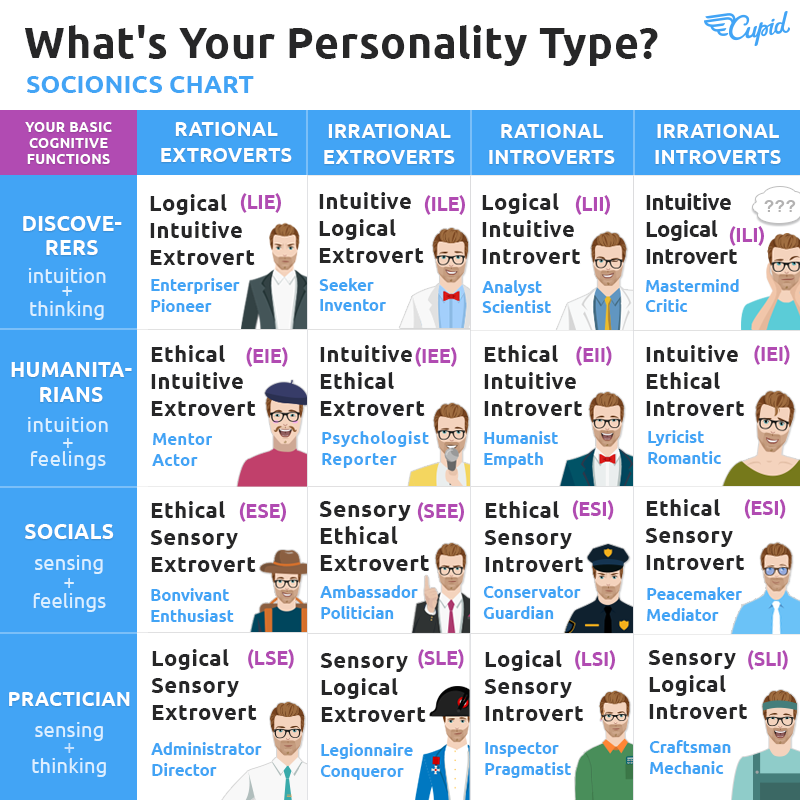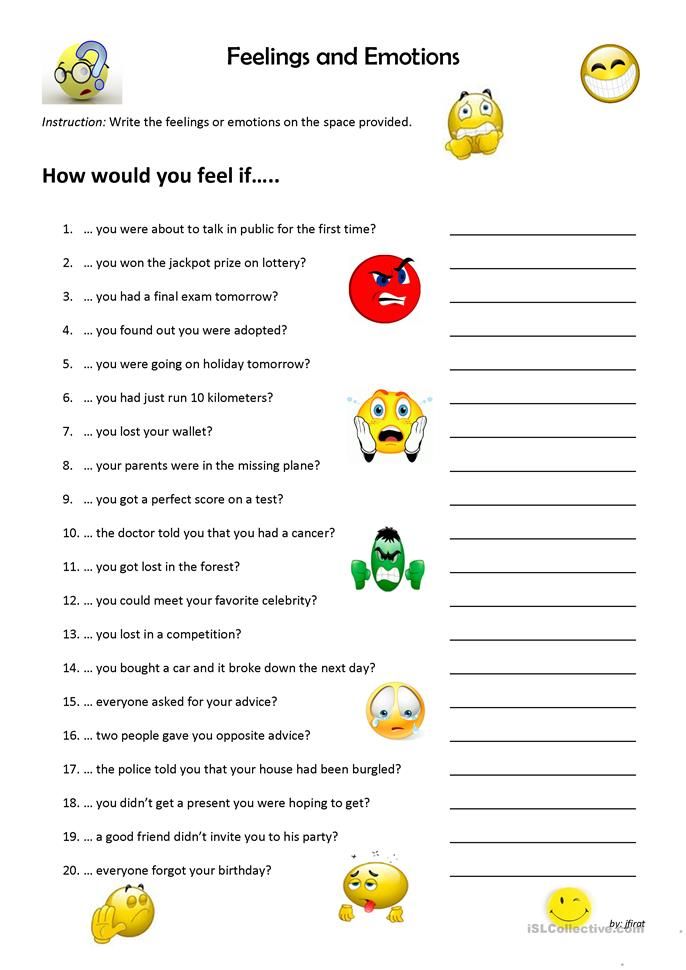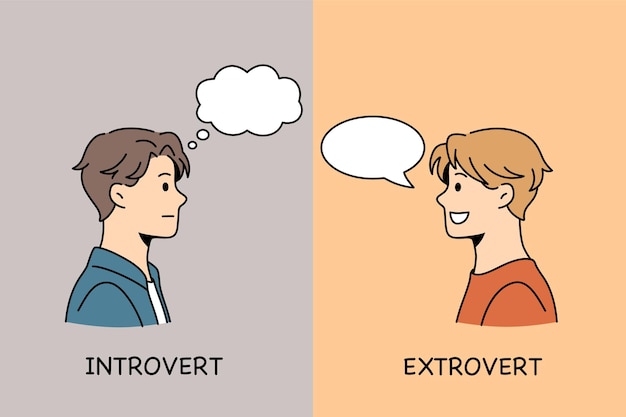How to overcome trypophobia
Triggers, Symptoms, Diagnosis, and Treatment
Written by Stephanie Watson
In this Article
- What Is Trypophobia?
- Is Trypophobia a Real Phobia?
- Trypophobia Symptoms
- Trypophobia Triggers
- Trypophobia Causes
- Trypophobia Risk Factors
- Trypophobia Diagnosis
- Trypophobia Treatment
- Trypophobia Outlook
What Is Trypophobia?
Does the sight of a honeycomb, sea sponges, or soap bubbles make you shaky and sick to your stomach? You could have trypophobia, a fear of holes.
The name for this problem comes from the Greek words "trypta," which means hole, and "phobos," which means fear. But the term doesn't date back to ancient Greece. "Trypophobia" reportedly first appeared on a web forum in 2005.
It's one of many fears of harmless things, like chaetophobia, a fear of hair, or microphobia, a fear of small things.
People with trypophobia have a strong physical and emotional reaction whenever they see patterns made up of holes or spots. The bigger the cluster of circles, the more uncomfortable they feel.
Is Trypophobia a Real Phobia?
True phobias are those that cause enough fear and worry to interfere with your everyday routine, according to the American Psychiatric Association (APA). Trypophobia doesn't meet that standard.
The APA doesn’t officially recognize this disorder in its Diagnostic and Statistical Manual of Mental Disorders, 5th edition (DSM-5), a large volume of all known mental illnesses and their symptoms. Experts say trypophobia is more likely disgust than fear.
Trypophobia Symptoms
The symptoms of trypophobia look a lot like a panic attack. You might have:
- Nausea
- Shaking
- Shortness of breath
- A fast heartbeat
- Sweating
- Itching, goosebumps, or a feeling like your skin is crawling
People with trypophobia may get these symptoms several times a week or every day. Sometimes, the fear of holes never goes away.
Trypophobia Triggers
Common things that can trigger trypophobia include:
- Holes or pebbles in concrete
- Air holes in a slice of bread
- Patterns in the frosting of a cake or pie
- The head of a lotus flower
- The holes in an old hockey mask
- Skin problems like sores, scars, and spots
- Spotted animals
- Shower heads
- LEDs in traffic lights
Trypophobia Causes
Researchers have a few ideas about what causes trypophobia.
The powerful reaction might be a way to protect yourself from danger. Some of the most poisonous animals on the planet -- like the king cobra, puffer fish, and poison dart frog -- have hole-like patterns on their skin. Those patterns are like the ones that bother people who have trypophobia.
Deadly diseases such as measles and smallpox cause circular skin rashes. Trypophobia could be a reaction that humans have developed to avoid getting sick.
It's also possible that the images themselves trigger fear.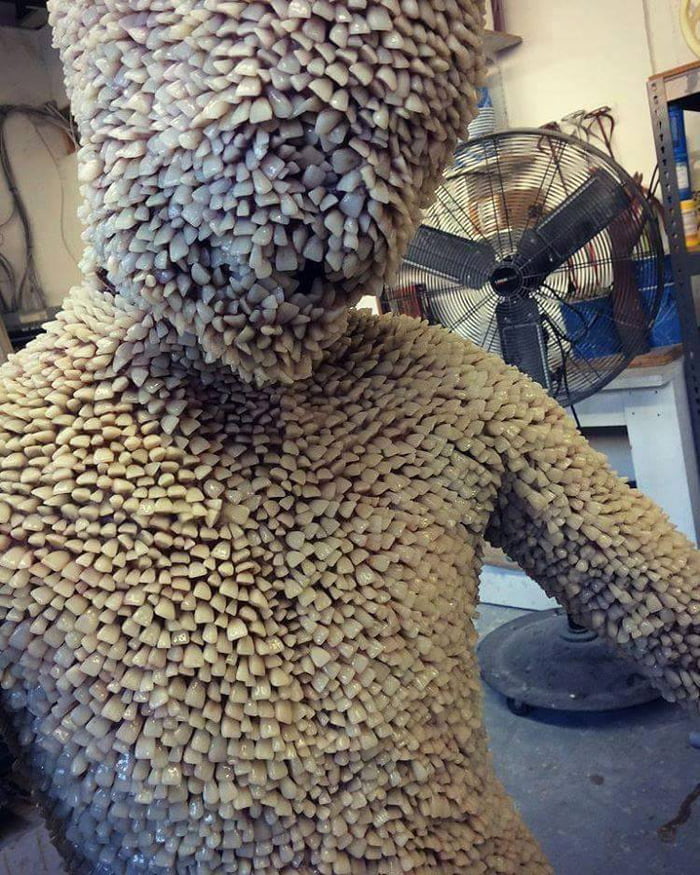 Some people may be more sensitive to the mix of light and dark in pictures of holes. Researchers say that hole-like patterns have a type of visual energy that can cause an unpleasant reaction.
Some people may be more sensitive to the mix of light and dark in pictures of holes. Researchers say that hole-like patterns have a type of visual energy that can cause an unpleasant reaction.
Other researchers believe that the fear comes from social anxiety. Circles look a little bit like clusters of eyes or faces staring at you, which can be upsetting if you get nervous in social settings.
Trypophobia Risk Factors
Trypophobia is more common in women than in men. It also runs in families. In one study, about 25% of people who had trypophobia also had a close relative with the condition.
Some people who are afraid of hole patterns also have other mental disorders, such as:
- Major depression
- Generalized anxiety disorder (GAD)
- Social anxiety
- Panic disorder
- Obsessive-compulsive disorder (OCD)
- Bipolar disorder
Trypophobia Diagnosis
Doctors don't know a lot about trypophobia, and it can be hard to diagnose.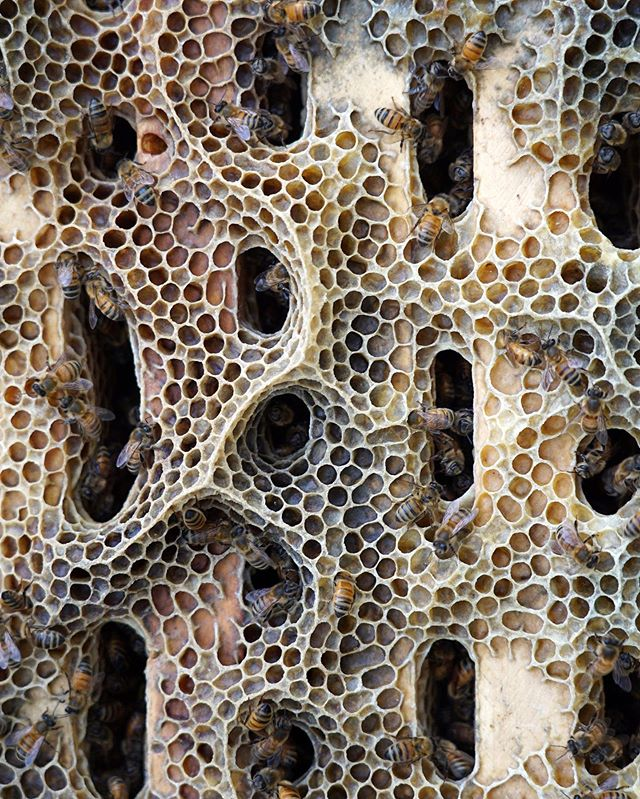 A psychologist or primary care doctor will ask about your symptoms and how they affect your everyday life.
A psychologist or primary care doctor will ask about your symptoms and how they affect your everyday life.
One group of researchers created a list of 17 questions called the trypophobia questionnaire. It asks people to rate symptoms like anxiety or fear on a scale from 1 ("Not at all") to 5 ("Extremely") when they see pictures of holes.
A few self-tests are available online, including the Implicit Trypophobia Measure 0.5a. Before you click on one of these tests, remember that they could include images that are disturbing, even to people who don't have trypophobia.
Trypophobia Treatment
Because trypophobia isn't a true disorder, there’s no set treatment for it. Some studies show that an antidepressant like sertraline (Zoloft) plus a type of talk therapy called cognitive behavioral therapy (CBT) are helpful. CBT tries to change the negative ideas that cause fear or stress.
Trypophobia Outlook
If circular patterns bother you, it can help to talk with other people who share your fear.![]() They might have some suggestions for ways you can manage trypophobia. Ask your doctor, or look online for support groups.
They might have some suggestions for ways you can manage trypophobia. Ask your doctor, or look online for support groups.
What Is Trypophobia? Symptoms, Causes, Diagnosis, Treatment, and Prevention
By Nuna Alberts, LCSWMedically Reviewed by Allison Young, MD
Reviewed:
Medically Reviewed
If the sight of clusters of small holes, circles, or bumps makes you panic, you may suffer from trypophobia.Kara Pecknold/Getty ImagesIt started when Maria Armstrong was 4, during playtime in the garden at her home. Some leaves of the ferns around her became upturned, exposing her to rows and rows of the round brown spore cases underneath. In an instant, a feeling of helplessness and fear set her heart racing and her stomach churning, a feeling that became seared in her mind. In that moment, Maria became a trypophobe: someone with an irrational reaction to the sight of clusters of small holes, circles, or bumps.
Over the years, anytime she saw similar groupings of circles, or even images of cells displayed during a biology class, she would feel a sickening discomfort. “If I am unexpectedly triggered, it might take me days to recover,” says Armstrong, now a sign language interpreter in Cherry Hill, New Jersey.
Although this phobia is not recognized in the American Psychiatric Association’s current Diagnostic and Statistical Manual of Mental Disorders (DSM-5), the term has been popular since 2009, when a University of Albany student founded the website Trypophobia.com and a support group on Facebook.
Because trypophobia can produce a range of symptoms with varying degrees of intensity, from mild aversion to an immediate, intense feeling of disgust, fear, or even a full-blown panic attack, it’s likely “a natural and widely shared phenomenon that most people can experience to some degree,” says Renzo Lanfranco, a PhD student in psychology and human cognitive neuroscience at the University of Edinburgh who has researched trypophobia.
Geoff Cole, PhD, a psychologist at the University of Essex in England who has also studied trypophobia, agrees. A trypophobe himself, he refers to the disorder as “the most common phobia you have never heard of.”
Common Questions & Answers
Is trypophobia real?
Trypophobia — the fear of repetitive patterns of closely packed holes or protrusions— is not recognized as an official diagnosis, but it has been widely discussed in social media. (Trypo comes from the Greek word for "hole.") It is considered by some experts to be a kind of anxiety disorder.
What triggers a trypophobia reaction?
Almost any repetitive pattern can trigger a reaction, even if the image or item does not strictly seem to fit the definition. In one case, a patient was triggered by bumps in the meringue on a pie.
Is trypophobia a skin disease?
No, but it could be an evolutionary response to skin diseases.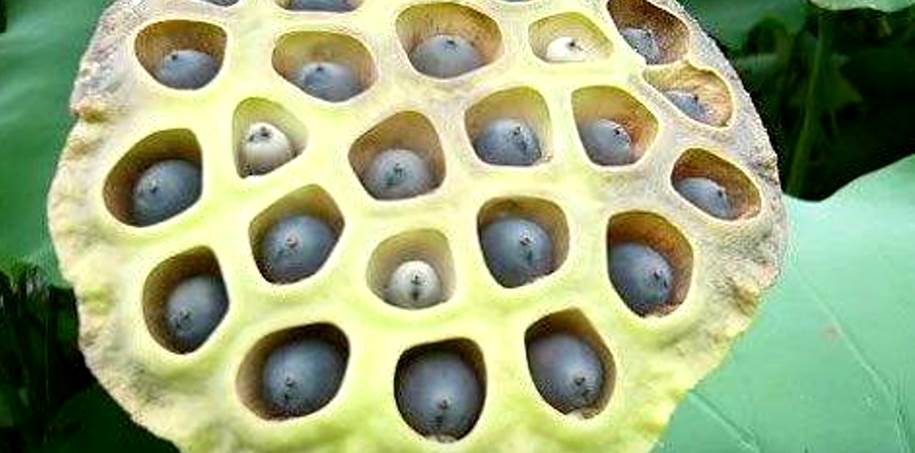 Many serious skin diseases resemble a cluster of shapes. Some say trypophobia is an excessive reaction to things that resemble serious skin diseases. That kind of response may have evolved as a way to keep people away from others' skin diseases.
Many serious skin diseases resemble a cluster of shapes. Some say trypophobia is an excessive reaction to things that resemble serious skin diseases. That kind of response may have evolved as a way to keep people away from others' skin diseases.
Is there a cure for trypophobia?
To the extent that trypophobia is a kind of anxiety, drugs used to treat anxiety may offer help. But there is no cure, and little research has been done to look for one. Exposure therapy — in which patients are gradually exposed to unpleasant images or situations — may be helpful.
How common is trypophobia?
There is little data, but some observers say it may be relatively common. It also appears to be more common in women than in men.
Signs and Symptoms of Trypophobia
One study, based on accounts by 200 members of a trypophobia Facebook support group, divided the symptoms into three categories:
- Cognitive-related reactions, such as uneasiness, anxiety, helplessness, disgust, or fear
- Skin-related reactions, such as goose bumps, itchiness, or feeling your skin crawl
- Physiological reactions, such as dizziness, trembling, shortness of breath, sweating, body shakes, racing heartbeat, headaches, nausea, or vomiting.
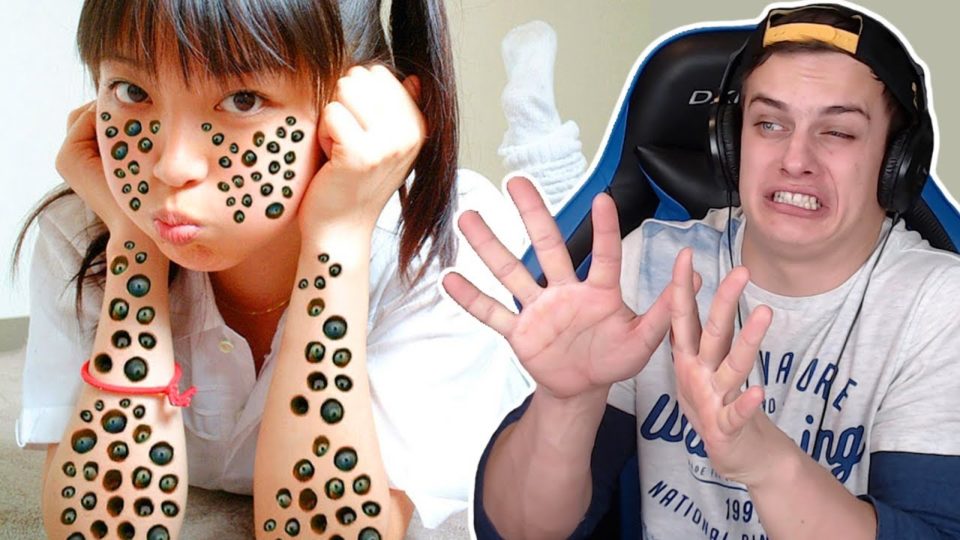
What Triggers Symptoms of Trypophobia?
Some trypophobe symptoms are set off by the sight of everyday, harmless items, such as:
- Sponges
- Soap bubbles
- Swiss cheese
- Honeycombs
- Hair follicles
- Skin pores
- Showerheads
- Strawberries
- Pomegranates
- Poppy-seed bagels
Others respond only to more exotic or unusual images, such as:
- Coral reefs
- Lotus seed pods
- Surinam toad giving birth
- Photoshopped pictures, such as rows of holes or teeth embedded on an arm, shoulder, or face
In 2017, various photoshopped images, including one of a woman with her scalp removed to reveal a honeycomb and one featuring a woman with ring-shaped pits all over her face were used to advertise the seventh season of American Horror Story. The ad campaign set off latent trypophobia in so many people that it led to a tweetstorm of protests and warnings.
More recently, trypophobia support groups have warned of potential triggers in the movie Black Panther, including one scene in which the character Killmonger, played by Michael B. Jordan, takes off his shirt to reveal a dense pattern of raised scars on his chest.
Why these or any images produce such an intense response in some people and not others is unknown, but recent studies have begun to tease out intriguing possibilities.
Causes and Risk Factors of Trypophobia
In 2015, the psychologists Arnold Wilkins and Geoff Cole, of England’s University of Essex Centre for Brain Science, conducted one of the earliest scientific studies to discover who is susceptible to trypophobia and why. They theorized that trypophobia evolved through evolution by natural selection.
Their reasoning goes like this: Since many of the world’s deadliest animals, including alligators and crocodiles, as well as certain venomous snakes, spiders, and insects, have repeating high-contrast bumps, circular markings, or pits on their skin, our ancient ancestors who were disgusted or scared by those patterns would have had a greater chance of survival in the presence of those dangers. According to this reasoning, these individuals survived to reproduce and passed those traits on to their offspring, who continued to pass it on, and the aversion continues in the gene pool to this day.
According to this reasoning, these individuals survived to reproduce and passed those traits on to their offspring, who continued to pass it on, and the aversion continues in the gene pool to this day.
A study by the University of Kent researchers Tom Kupfer and An T.D. Le, published in the January 2017 issue of the journal Cognition and Emotion, took this idea one step further. Since the danger of poisonous animals exists, but is not generally a persistent threat, they proposed that trypophobia is more likely an exaggerated response to a natural protective tendency to avoid infectious skin diseases such as smallpox and measles, and parasites, such as scabies and ticks.
What Are the Risk Factors for Trypophobia?
Not much is known about what may predispose someone to trypophobia. The only reasonably strong link found so far is to social anxiety disorder, which is characterized by a strong, persistent fear of being judged by others. Avoidance of facial features, particularly the eyes, is an important marker of that condition, and clusters of circles or holes may make a person with social anxiety disorder feel as if all eyes are upon him or her.
Avoidance of facial features, particularly the eyes, is an important marker of that condition, and clusters of circles or holes may make a person with social anxiety disorder feel as if all eyes are upon him or her.
Trypophobia may also run in families. What could explain a familial link? One theory is that trypophobia can be acquired through what is called observational learning: You simply become conditioned to be irrationally afraid of triggers after a close relative negatively reacts to them.
Another theory is that the fear is genetic, an idea bolstered by recent University of Bonn research that pinpointed genetic links to trypophobia’s close cousin, social anxiety disorder.
Or it could be due to a combination of environment and inheritance. Your genetic makeup may predispose you to the condition, but it may only come to light if something or someone in your environment ignites the fear.
How Is Trypophobia Diagnosed?
Are you bothered by the bubbles of boiling water? Does the sight of cantaloupe seeds clustered inside the fruit disgust you? Do you avoid leopard skin patterns? All are possible signs of trypophobia. If you are merely bothered by these phenomena, however, you likely have a mild aversion. If your reactions trigger avoidance and changes in behavior, the condition may be more on the level of phobia.
While there is no well-researched way to diagnose the condition, you can discover for yourself if you have it by looking at triggering images, which are easy to find through Google, Trypophobia.com, and Reddit. Or you can take the Trypophobia Test on YouTube.
Prognosis of TrypophobiaMost phobias can be effectively managed with proper treatment. Sometimes, therapy can help you overcome your fears permanently.
Duration of Trypophobia
The duration of trypophobia will depend on a person’s particular situation.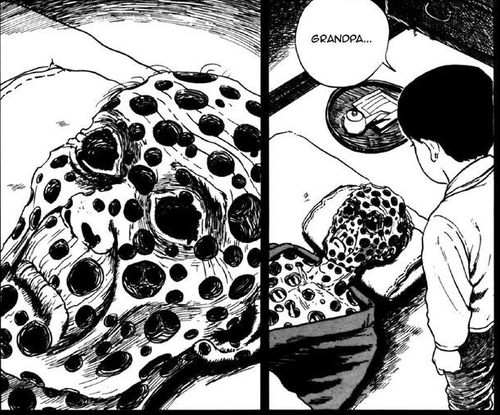 Some people battle symptoms, such as anxiety and fear, for their whole lives. Others are able to effectively control and manage their condition.
Some people battle symptoms, such as anxiety and fear, for their whole lives. Others are able to effectively control and manage their condition.
Treatment and Medication Options for Trypophobia
Many people with a mild aversion manage to control their fear and carry out daily activities without incident simply by avoiding triggers and by enlisting understanding friends and family to alert them to potential ones. If your aversion is on the level of phobia, avoidance can make your situation worse. The following are some approaches to treating problematic trypophobia.
Exposure therapy People who find that trypophobia disrupts their daily routines, reduces their self-esteem, or causes extreme anxiety can turn to the most widely accepted technique for taming phobias, a desensitizing process called exposure therapy.
In progressive steps by yourself or with the help of a therapist, you begin by looking at fairly benign triggering images while using a relaxation technique, such as deep breathing, and reminding yourself that you are not in any danger. You then slowly work up to being able to stare at the images that previously felt most threatening until you realize that nothing bad is happening.
You then slowly work up to being able to stare at the images that previously felt most threatening until you realize that nothing bad is happening.
Exposure therapy worked for Jordan Trudgett, 27, a software development engineer in Seattle. He instinctively turned to it without seeking professional help because he didn’t even know that anyone else had the condition. After forcing himself to stare at more and more upsetting images, “my sensitivity to them decreased,” he says. While it didn’t extinguish the fear entirely, seeing trypophobic patterns is no longer petrifying enough to make the hairs on his arms stand up. “I can cope better now,” he says.
Emotional Freedom Techniques (EFT) If exposure therapy is not successful, or is too terrifying to even try, tapping, aka Emotional Freedom Technique (EFT), a mind-body method for reducing stress and anxiety, may help reduce or eliminate trypophobia, says Roberta Temes, PhD, a clinical psychologist in Scotch Plains, New Jersey, and the author of The Tapping Cure: A Revolutionary System for Rapid Relief From Phobias, Anxiety, Post-Traumatic Stress Disorder, and More.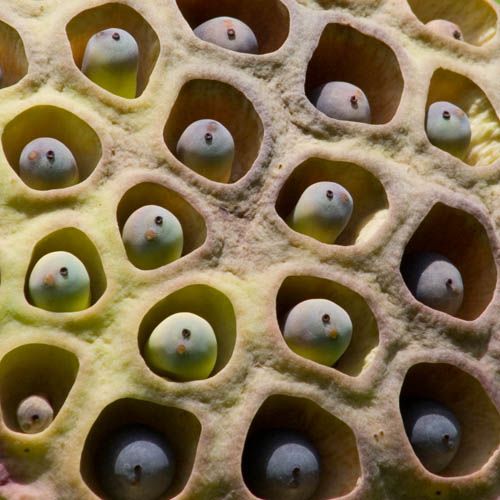
EFT involves tapping specific acupuncture points on the body with the fingertips while focusing on the phobia and repeating positive affirmations.
The first step is identifying a feared object. “Let’s say it’s Swiss cheese,” says Dr. Temes. “This technique works best when you start in a state of terror, so you would visualize Swiss cheese until you became more and more upset. You then would tap different points on the face, upper body or hands, while saying something like, ‘Even though Swiss cheese disgusts me, I love and accept myself'; 'Even though Swiss cheese disgusts me, I am safe,’ or ‘Even though Swiss cheese disgusts me, I’m okay. I can still go into the dairy aisle.’
“This technique shifts the nervous system away from fight or flight and permits you to be brave in the face of your phobia because it permits you to accept yourself,” Temes says.
Although science has not figured out how EFT works physiologically — it could simply be a placebo effect — research, such as a study published in 2019 in the Journal of Evidence-Based Integrative Medicine, have found that it can reduce the intensity of phobias.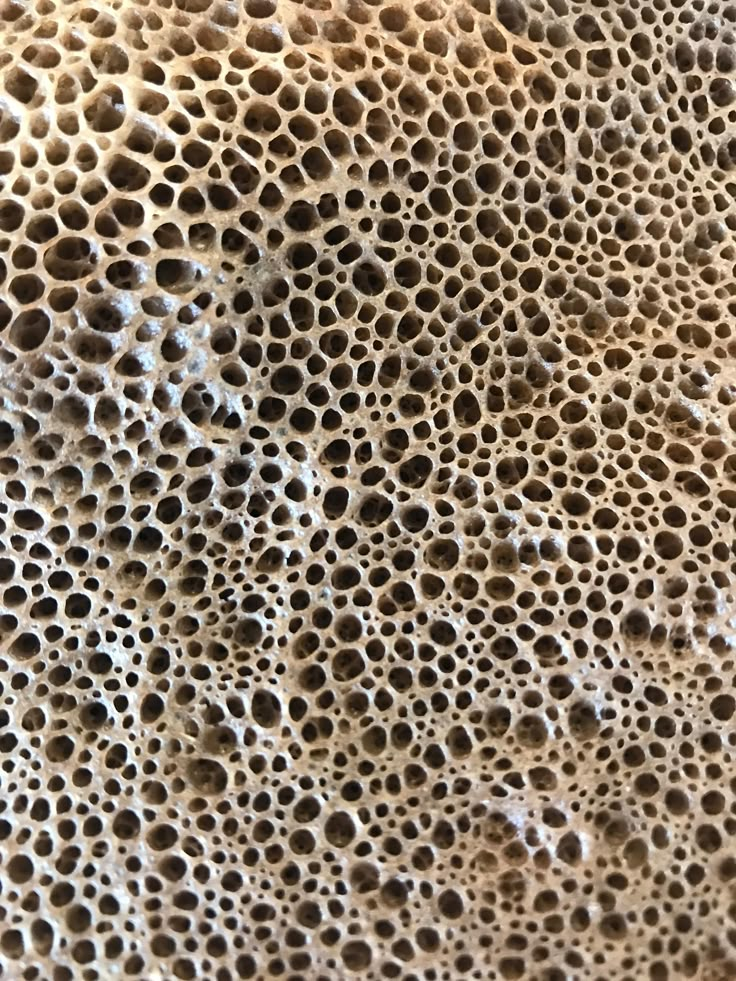
Community It may help to know that you are not alone. The public Facebook group Trypophobia: Fear of Clusters of Holes, which has more than 14,000 followers, is a good place to find advice and support.
“I think it’s good to know you’re not going crazy if you have this,” says Trudgett. “It’s really heartwarming to know that a lot of people share this condition.”
Medication OptionsWhile exposure therapy is the preferred method, phobias are sometimes treated with medications. Certain drugs can lessen anxiety and other symptoms that occur when someone is exposed to a trigger.
Beta-blockers, which block the effects of adrenaline in the body, and sedatives, which help you relax, can be useful in managing the symptoms of some phobias, particularly in the short-term.
Alternative and Complementary TherapiesSome alternative treatments may help people with trypophobia relax and manage their anxiety.:strip_icc():format(jpeg)/kly-media-production/medias/2269758/original/033483200_1530775472-Trypophobia.jpg) Common methods include:
Common methods include:
- Yoga
- Massage
- Physical activity
- Hypnosis
Prevention of Trypophobia
If you’re experiencing acute symptoms of trypophobia, using relaxation techniques can shorten their duration while they are occurring and reduce their frequency and intensity in the future. Deep breathing, for example, can calm your anxiety and fear by slowing down your heart rate and inducing a relaxation response in your body.
One simple, effective technique is called box breathing.
Here's the technique:
- Exhale slowly through your nose for a count of four.
- Inhale slowly through your nose for a count of four.
- Exhale slowly through your nose for a count of four.
- Continue breathing this way for one to five minutes.
Complications of Trypophobia
If phobias go untreated, they can lead to complications, such as:
- Mood disorders
- Social isolation
- Substance abuse
- Suicide (in severe cases)
Research and Statistics: Who Has Trypophobia?
While the exact prevalence of trypophobia isn’t known, some studies have shown the condition may be somewhat common.
In the abovementioned study published in the Quarterly Journal of Experimental Psychology, researchers estimated that 15 percent of adults (18 percent of females and 11 percent of males) experience trypophobia to some degree.
Celebrities Who Are Trypophobes
Celebrities are not immune to this condition, and have drawn attention to the disorder in recent years. Those who have talked publicly about their trypophobia include the actress Sarah Paulson, who is a trypophobe in real life and whose phobia was written into her role on the popular television series American Horror Story.
Kendall Jenner, of Keeping Up With the Kardashians, has also outed herself as a trypophobe. “I can't even look at little holes,” Kendall wrote in a blog post. “It gives me the worst anxiety. Who knows what's in there?”
Related Conditions and Causes of Trypophobia
Resources We Love
Favorite Organizations for Essential Trypophobia InformationTrypophobia. com
com
From triggers to treatments, this site provides lots of information about trypophobia and related disorders. It even offers a free, two-minute test to help you decide if you’re a trypophobe. Beware if you suspect you suffer from this: You will have to look at images of holes.
American Psychiatric Association
The APA is a trusted organization made up of psychiatrists who aim to promote the highest quality of care for people with mental illnesses. We love their blog list section, which provides links to numerous disorders. Their trypophobia page breaks down some of the latest research on the subject.
Anxiety and Depression Association of America
With more than 1,800 professional mental health members, the ADAA is a top source for information on anxiety, depression, and related disorders. In their podcast section, you can listen to recordings from past professional conferences. They also offer free monthly webinars, which cover a wide variety of topics.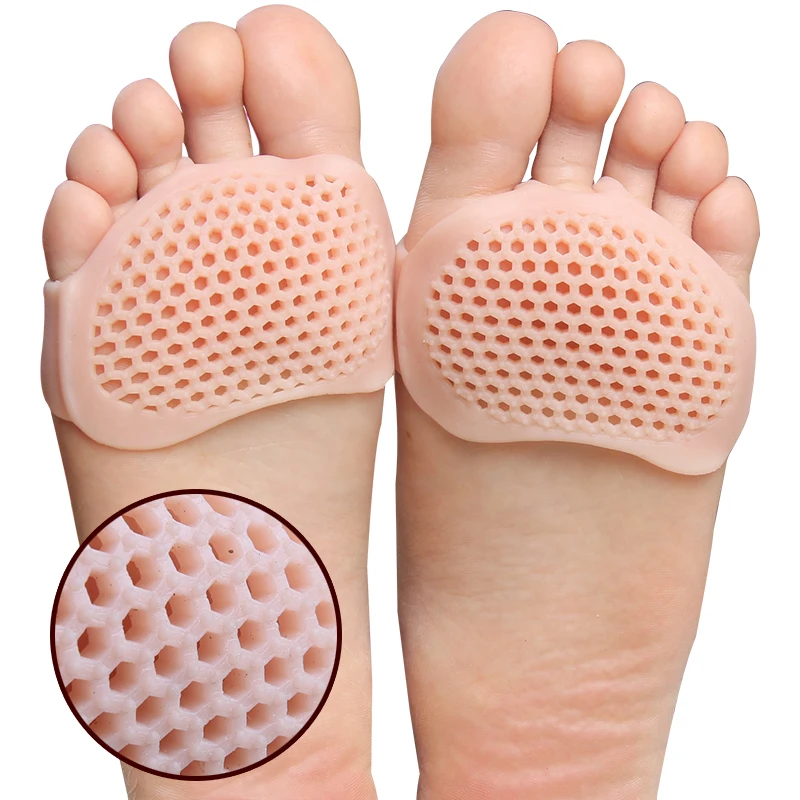
Mental Health America
MHA is the nation’s leading community-based nonprofit organization dedicated to helping those living with mental illnesses. One of their many useful features is the mental health screen — a quick quiz that helps you determine if you’re experiencing a mental health condition, such as anxiety or depression.
Favorite Online Support Networks
Looking to connect with others? Individuals on Facebook have launched a closed group page dedicated to providing support to those with trypophobia. They currently have more than 4,500 members.
National Alliance on Mental Illness Support Groups
NAMI offers free support groups for people who face mental health challenges. You can locate one in your area by clicking here.
Favorite Apps
Fears & Phobias
Want to overcome your trypophobia? This app uses daily hypnosis to help you learn to manage fears and phobias. Simply listening to the audio sessions could help you change your mindset, become more relaxed, and feel calmer. We love that you can repeat sessions or loop them as you sleep.
Simply listening to the audio sessions could help you change your mindset, become more relaxed, and feel calmer. We love that you can repeat sessions or loop them as you sleep.
What’s Up? A Mental Health App
We appreciate that this app uses techniques from cognitive behavioral therapy and acceptance commitment therapy to help you cope with mental health issues. Its diary feature lets you rate your emotions. You’re also encouraged to use breathing techniques and read positive quotes.
Additional reporting by Julie Marks.
Editorial Sources and Fact-Checking
- Abbasi J. Is Trypophobia a Real Phobia? Popular Science. July 25, 2011.
- Cole G, Wilkins A. Fear of Holes. Psychological Science. August 2013.
- Le ATD, Cole G, Wilkins A. Assessment of Trypophobia and an Analysis of Its Visual Precipitation. Quarterly Journal of Experimental Psychology. March 2015.
- Kupfer TR, Le ATD.
 Disgusting Clusters: Trypophobia as an Overgeneralised Disease Avoidance Response. Cognition and Emotion. June 2018.
Disgusting Clusters: Trypophobia as an Overgeneralised Disease Avoidance Response. Cognition and Emotion. June 2018. - Chaya K, Xue Y, et al. Fear of Eyes: Triadic Relation Among Social Anxiety, Trypophobia, and Discomfort for Eye Cluster. PeerJ. May 5, 2016.
- LoBue V, Rakison DH, DeLoache JS. Threat Perception Across the Life Span: Evidence for Multiple Converging Pathways. Current Directions in Psychological Science. December 14, 2010.
- Social Phobia: Indication of a Genetic Cause. ScienceDaily. March 9, 2017.
- Gregory AM, Lau JY, Eley TC. Finding Gene-Environment Interactions for Phobias. European Archives of Psychiatry and Clinical Neuroscience. March 2008.
- Specific Phobias: Symptoms and Causes. Mayo Clinic. October 19, 2016.
- Specific Phobias: Diagnosis and Treatment. Mayo Clinic. October 19, 2016.
- Bach D, Groesbeck G, et al. Clinical EFT (Emotional Freedom Techniques) Improves Multiple Physiological Markers of Health.
 Journal of Evidence-Based Integrative Medicine. February 19, 2019.
Journal of Evidence-Based Integrative Medicine. February 19, 2019. - Relaxation Techniques: Breath Control Helps Quell Errant Stress Response. Harvard Health Publishing. April 13, 2018.
- Divine M. The Breathing Technique a Navy SEAL Uses to Stay Calm and Focused. Time. May 4, 2016.
- Petit S. Bees and Clowns and Holes, Oh My! Sarah Paulson’s Real Fears Were Written Into ‘American Horror Story.’ People. September 19, 2017.
- Marquina S. Kendall Jenner: ‘I Have Really Bad Trypophobia.’ US Weekly. August 15, 2016.
Show Less
By subscribing you agree to the Terms of Use and Privacy Policy.
The Case Against Food Morality: Why Foods Aren't ‘Good’ or ‘Bad’
By Christine ByrneShould You Pull the Plug on Social Media? Weighing the Pros and Cons
Tom Holland, Selena Gomez, and Chrissy Tiegen took a break. Here’s what you should know about whether, when, and how a digital detox can be good for you. ..
..
By Becky Upham
All About Kindness: Definition, Health Benefits, and How to Be a Kinder Person
By Michele Lent HirschHow Did the Pandemic Change Kids’ Brains? A Family Therapist Weighs In
It’s the brain’s way of saying, ‘I’m not caught up yet; this is all going too fast,’ says Amanda Craig, PhD.
By Maia Niguel Hoskin, PhD
Are You Starting a Diet for the Right Reasons?
Here are 5 questions to ask yourself before dramatically changing your eating habits to know that you’re emotionally ready, and making the best nutrition...
By Jessica Migala
‘Why Last Year’s Wins Are Helping Me Write This New Year’s Resolutions’
By Sandhira Wijayaratne, MDSesame Care Review: Online Therapy on Demand
Sesame can connect you to a whole health team through its virtual platform. We reviewed Sesame Care to detail its services, costs, and membership perks...
We reviewed Sesame Care to detail its services, costs, and membership perks...
By Vanessa Ling
BetterHelp Reviews: Pricing and Plans in 2022
Looking for an affordable and accessible online counseling platform? BetterHelp is a convenient virtual therapy option for people who want to interact...
By Sara Lindberg
What Is Eosinophilic Esophagitis (EoE)? Symptoms, Causes, Diagnosis, Treatment, and Prevention
8 Unusual Signs of Burnout
Gender Dysphoria: What It Is, Symptoms, Treatment, and More
Trypophobia: what it is and how to get rid of it
Trypophobia is the fear or disgust at the sight of clusters (clusters) of small holes, irregularities or patterns, such as honeycombs, plant seed pods, or close-up photographs of skin pores.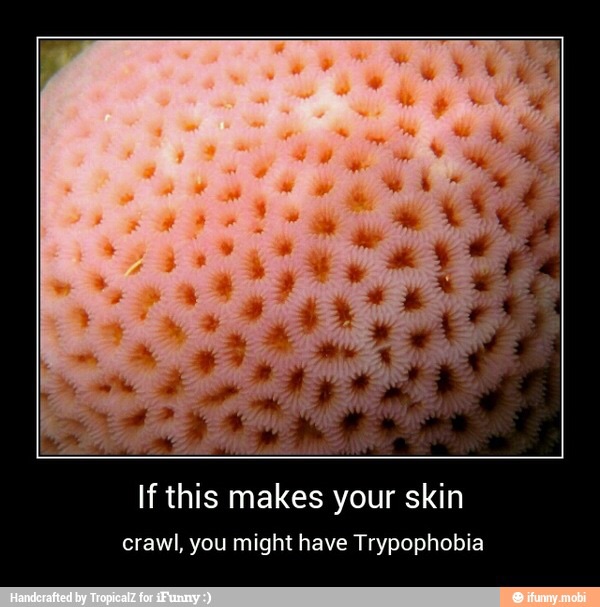 The word comes from the Greek "tripa" (τρύπα), which means "drilling" or "hole". Doctors do not recognize trypophobia as a diagnosable disorder because it is poorly researched.
The word comes from the Greek "tripa" (τρύπα), which means "drilling" or "hole". Doctors do not recognize trypophobia as a diagnosable disorder because it is poorly researched.
- What is
- Causes
- Symptoms
- How to get rid of
- Trypophobia test
- When to See a Doctor
The material was commented by Ekaterina Kharina, counseling psychologist at the Center for Cognitive Therapy Yakova Kochetkova, psychotherapist, psychiatrist at the PsyMedClinic Mental Health Clinic
Advertising on RBC www.adv.rbc.ru
What is trypophobia
Trypophobia can manifest itself in different ways. Its main trigger is a surface with a group of small contrast holes, bumps or patterns. Some feel discomfort only at the sight of “naturalistic” clusters, such as honeycombs, wormy meat, or a toad that carries fry in holes on its back. For others, even a photo of plastic cups standing side by side, cheese with holes in it, or traffic light LEDs can make them feel uncomfortable.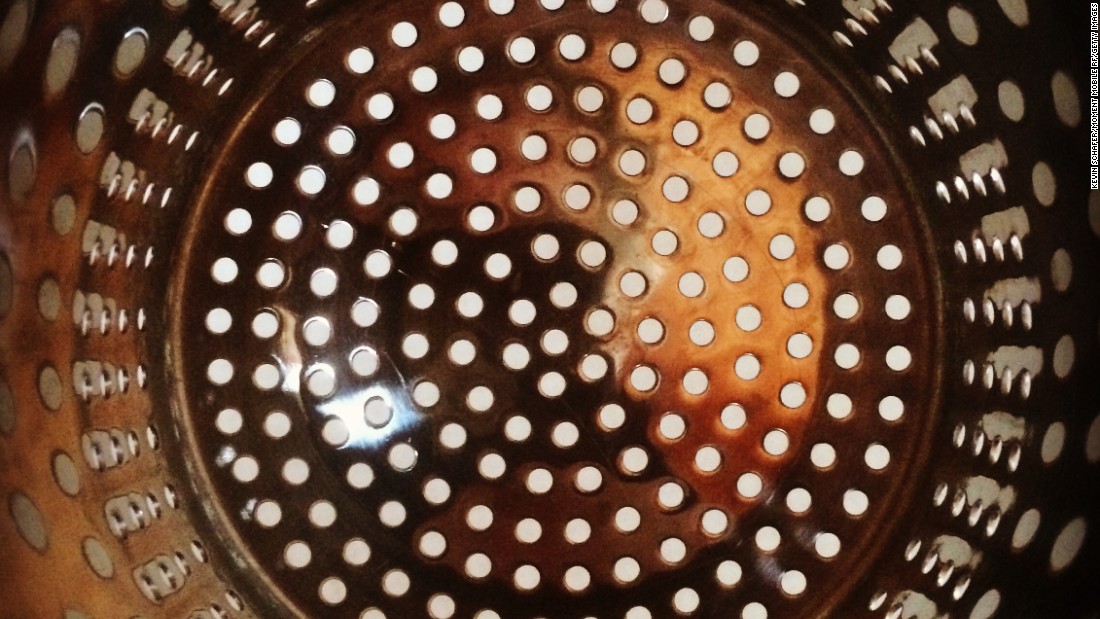 nine0003
nine0003
Researchers believe that trypophobia goes back to very ancient human instincts and accompanies it throughout history. However, it was "discovered" quite recently. The first case of fear of cluster holes was described in 1998, and the term itself appeared only in 2004 [1]. Therefore, today this phenomenon is poorly studied and is not an official diagnosis.
In 2009, the Trypophobia.com website appeared, thanks to which, by 2012, millions of people had learned about this disease, many of whom were surprised to find it in themselves. In 2016, American model Kendall Jenner admitted that she suffers from severe trypophobia. nine0003
Terrible clowns and mirrors: the strangest celebrity phobias
Scientists believe that the fear of cluster holes is not a phobia to the same extent as, for example, agoraphobia, that is, the fear of open spaces, or arachnophobia, the fear of spiders. Trypophobia doesn't fit most of the diagnostic criteria for a phobia—and here's why.
© Shutterstock
First, every sixth person experiences some manifestation of trypophobia, although it is quite possible that this phenomenon is even more widespread [2]. This allows scientists to consider discomfort at the sight of cluster holes as the norm. A phobia is a disorder in which a person experiences fear where most other people do not. nine0003
In addition, with a phobia, fear prevents a person from living, and this happens infrequently with trypophobia. “In practice, we very rarely encounter such complaints,” notes Ekaterina Kharina. “For the most part, people simply avoid such images, don’t look at them, and live their lives in peace.”
Secondly, the symptoms of trypophobia from a clinical point of view are quite different from the manifestations of other phobias. In 2018, scientists from the American Emory University conducted an experiment in which they proved that the emotion caused by cluster holes is rather not fear, but disgust [3]. nine0003
nine0003
Groups of students were first shown snakes and spiders, animals that are most often the objects of phobias. The pupils of the majority greatly dilated - scientists began to consider this a sign of a reaction of fear. However, images of the cluster holes did not lead to pupil dilation, and in some, they even narrowed.
Researchers have stated that fear causes arousal, and pupillary dilation is one of its signs. Disgust, on the contrary, suppresses a person, makes him refuse to act. nine0003
“ICD-10 (an international classification of diseases adopted in 1990, used in Russia) has specific isolated phobias, and ICD-11 (adopted in 2012) has specific phobias,” says Ekaterina Kharina. - In principle, the most pronounced cases of trypophobia with a stretch could be attributed there. But if we look at the description of these diagnoses, then they rather mean an obsessive fear of some situations or things, rather than disgust. And we often encounter disgust with obsessive-compulsive disorder. nine0003
nine0003
I think that there may be people with obsessive trypophobic images, but I have never met such people. If a person feels disgust only when confronted with such images or objects, but there is no obsession, then this cannot be attributed to OCD either.
© maxpixel.net
Causes of the fear of holes
The results of the experiment by scientists from Emory are consistent with the modern assessment of trypophobia from the point of view of evolution. Today, scientists believe that trypophobia is an evolved natural reaction of our nervous system, designed to protect us from the threats associated with infections or parasites. nine0003
If a person is faced with danger, such as a predatory animal, he needs stimulation and strength to escape, so the nervous system responds to such a trigger with an adrenaline rush.
But if a person encounters something unhealthy and potentially infectious, such as a worm fruit, spoiled meat with larvae, or a person with a skin disease, the brain should make him refuse the interaction - that is, on the contrary, suppress the activity. This is how disgust works in trypophobia [4]. nine0003
This is how disgust works in trypophobia [4]. nine0003
Most scientists agree on this interpretation of the origin of this disorder. However, it is not clear what was the original object, the aversion to which has developed into an abstract trypophobia in modern man.
According to one theory, trypophobia originates in a reaction to honeycombs, wasp nests, or burrows of poisonous snakes. Other scientists have similarly associated trypophobia with infectious human diseases [5]. Indirectly, this interpretation is confirmed by a study in which it turned out that in people with skin diseases, trypophobic reactions are on average stronger than in others [6]. nine0003
According to another version, trypophobia is associated with social anxiety disorder, and cluster holes on a subconscious level are associated with faces or eyes that constantly watch a person [7].
It is also known that trypophobia is more prone to women and people with a number of mental and mental disorders: OCD, depressive, bipolar, panic and anxiety.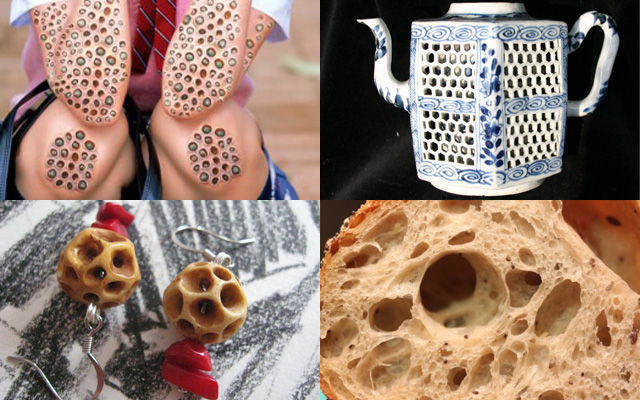
© Shutterstock
Symptoms of trypophobia
The most common symptom of trypophobia is mild discomfort. Its manifestations include:
- anxiety;
- nausea;
- increased sweating;
- palpitations;
- tremor;
- sensation of itching in various parts of the body.
Despite the fact that trypophobia is not yet considered a disease, in some cases it can lead to serious problems - panic attacks, increased anxiety.
“With a strong degree of trypophobia, negative impressions from seeing cluster holes can persist for a long time,” says Ekaterina Kharina. - For example, a person looked at such pictures - and the next day or even several days he thinks about them. But in my practice there were no cases when trypophobia led to pronounced shock reactions.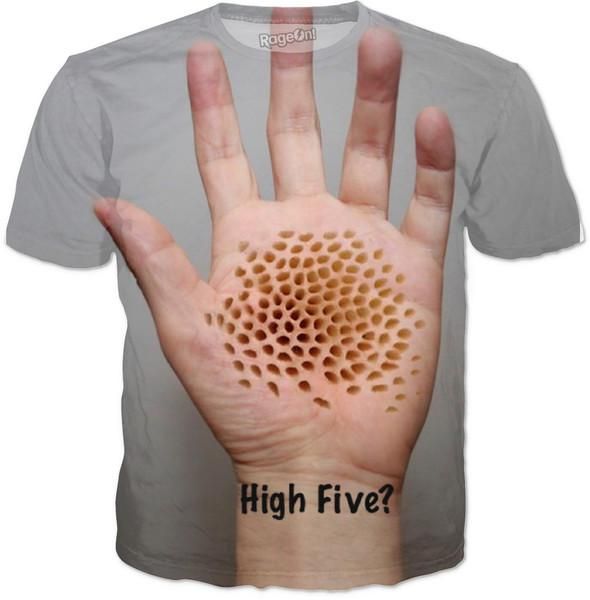 nine0003
nine0003
If trypophobia goes beyond the usual discomfort, people may begin to avoid certain things or certain foods. One of the few reported cases of acute trypophobia is a 12-year-old girl who was disgusted by any porous or sesame-sprinkled bread, strawberries, and noodle soup. She also could not drink raspberry juice or eat marmalade: the sensation of stones or granules on her tongue evoked the same reaction in her [8].
How to get rid of trypophobia
Cognitive behavioral therapy (CBT)
The main treatment for trypophobia is cognitive behavioral therapy (CBT). The psychologist helps the patient "replace" implausible attitudes about the objects of fear with more realistic ones, and then change the behavior [9].
Exposure therapy
Another popular and effective method is exposure therapy, during which a person is gradually taught to control their level of fear. As Ekaterina Kharina notes, this is one of the subspecies of cognitive-behavioral therapy. nine0003
nine0003
First, in a state of complete relaxation, the patient tells what he is afraid of, then he is shown a picture of the object of fear. Over time, a person may be able to stand next to him and even touch him. Sensitivity and the level of fear are thus reduced.
“Someone may have the idea that he will not be able to bear the sight of such an image, that his discomfort will be prolonged or will not end, that he will lose control of himself or go crazy,” Kharina explains. “With exposure, we test the patient’s “hypothesis” that their discomfort persists.” nine0003
The psychiatrist notes that exposure works well for ordinary phobias, but in the case of disgust, this method in the traditional format does not lead to a reduction in discomfort. Therefore, it had to be changed a little: a person is taught to endure what disgusts him, form positive associations and connections in memory.
© Pexels
Medications
In some cases, your doctor may prescribe medication to treat trypophobia with antidepressants or benzodiazepines. nine0003
nine0003
Trypophobia test
Since trypophobia is not considered a diagnosis, it does not have precise diagnostic criteria. The tests described below are not scientific and involve looking at the triggers of trypophobia.
Japanese scientists have developed a questionnaire to measure the level of trypophobia in humans. It is necessary to evaluate the strength of 17 sensations that he experiences when looking at the cluster holes, on a 5-point scale, where 1 - the sensation does not manifest itself at all, and 5 - it manifests itself very strongly. Here is a list of these sensations:
- fright;
- disgust, loathing;
- feeling of discomfort or heaviness;
- feeling of panic, screaming;
- alarm;
- nausea;
- bodily manifestations of excitement: "butterflies in the stomach", palpitations, sweating, pain in the abdomen, etc.
 ;
; - "feeling like I'm going crazy";
- desire to destroy cluster holes;
- itching;
- tickling; nine0006
- goosebumps;
- desire to cry;
- vomiting;
- chills;
- respiratory disorders;
- shiver.
There is no exact methodology for assessing the level of trypophobia on this test, but in the experiment of the creators of the test, the average score of a sample of 582 people was 32.2, and the range of values was from 17 to 85 [10].
There are a huge number of tests for trypophobia on the Internet. Any of them will help to subjectively assess its level to one degree or another. Implicit Trypophobia Measure 0.5a is often recommended. nine0003
© Shutterstock
Trypophobia video test is very popular. It's very easy to get through. First you need to turn on the video and take a pose according to the instructions in it. Next, you will be shown trypophobic pictures that will become more and more unpleasant. When you feel like changing your position or turning off the video, do it.
It's very easy to get through. First you need to turn on the video and take a pose according to the instructions in it. Next, you will be shown trypophobic pictures that will become more and more unpleasant. When you feel like changing your position or turning off the video, do it.
There are no exact criteria here either, but the longer you can watch this video without discomfort, the less likely you are to have trypophobia. nine0003
The author of this article had itching sensations all over his body already at the 30th second, and soon a noticeable discomfort appeared. During the editorial experiment, which involved six women and one man, it was not possible to find people with serious manifestations of trypophobia. Their reaction was much less pronounced: some felt a little uncomfortable at the end, but only one woman experienced itching sensations typical of trypophobia.
However, they managed to find one trypophobe: it turned out to be the 33-year-old husband of an employee. A video test was not even needed: it was enough just to mention that an animal called the Surinamese pipa appears there. This is a toad that carries fry in holes on its back. If they need to be released, then she "shoots" them. nine0003
A video test was not even needed: it was enough just to mention that an animal called the Surinamese pipa appears there. This is a toad that carries fry in holes on its back. If they need to be released, then she "shoots" them. nine0003
The reaction was sharp: the memory of seeing a photo of an animal once caused nausea, followed by a request that he never be reminded of the pip. Then, for a whole day, he could not calmly look at holes with holes, for example, at porous sponges, which he associated with pipa.
When to See a Doctor
According to Harina, one should seek medical help with symptoms of trypophobia when they bring severe discomfort into everyday life. For example, if it is caused not only by the Surinamese pipa, but also by bubbles in the water or holes in pancakes or pancakes. nine0003
Unreal fear. What is trypophobia and how to cope with it
What are we afraid of
Scientists say that the feeling of fear is useful because it can activate the instinct of self-preservation and save a person's life. Practicing psychologist Roman Struchaev noted that there is a natural and neurotic fear. The first is due to a real threat that a person can defeat or run away and get rid of the feeling of fear. Neurotic fear is caused by the thoughts and anxieties of a person, when there is no real danger, but there are only assumptions about the danger in the future. A phobia is already an obsessive fear that does not go away, the specialist emphasized. nine0003
Practicing psychologist Roman Struchaev noted that there is a natural and neurotic fear. The first is due to a real threat that a person can defeat or run away and get rid of the feeling of fear. Neurotic fear is caused by the thoughts and anxieties of a person, when there is no real danger, but there are only assumptions about the danger in the future. A phobia is already an obsessive fear that does not go away, the specialist emphasized. nine0003
The term "trypophobia" is a combination of Greek words that translate as "hole, drill" and "fear", it was introduced in 2005. In 2015, an article by Professor Arnold Wilkins and Jeff Cole was published, in which they detailed the results of a survey of people suffering from negative reactions when they see clusters of small objects located close to each other. In particular, they complained of feelings of discomfort, fear, or anxiety.
The researchers also studied the comments of users of one of the thematic Internet communities and identified three groups of symptoms that are typical for trypophobes: cognitive (disgust, disgust, anxiety), skin (itching, dryness) and physiological (nausea, hand tremor, difficulty breathing ). nine0003
nine0003
Trypophobia is not included in the official list of diseases, however, many people experience fear when interacting with images of objects containing holes or holes, or watching them live. However, psychologist Struchaev believes that in some cases, patients experience a substitution of concepts.
“Phobia is one of the ways to cope with emotional stress, more or less controlled. Behind it can be both fear and any other feelings, even sexual arousal that does not find discharge. In my practice, I often ask patients: "What do you feel?", "How afraid are you?" And it often turns out that it’s not about fear, but about disgust,” he says. nine0003
“Fears seem strange and pretentious”
Phobic experiences are irrational, says Larisa Ovcharenko, Candidate of Psychology, Associate Professor at Moscow City Pedagogical University. In the case of trypophobia, the fear may not even be directly related to holes, holes, or certain patterns.
“The scientist Carl Gustav Jung spoke about the collective unconscious, that such fears are the result of some experience of a former life that we adopt through the upbringing system and various attitudes. People may experience fear of the unknown in front of what is in holes in the ground or in any other place. No one is investigating what exactly is in such holes, it remains unknown, ”the specialist argues. nine0003
People may experience fear of the unknown in front of what is in holes in the ground or in any other place. No one is investigating what exactly is in such holes, it remains unknown, ”the specialist argues. nine0003
Roman Struchaev adds that there are several approaches to justifying phobias, including anthropological ones. He recalled the existence of studies in which scientists compared holes on objects with injuries on the human body and indicated that a possible root of trypophobia was an unwillingness to receive bodily harm, as, for example, in the case of boils that opened with bubonic plague - this could result in an evolutionary fear of holes or wounds formed into a pattern.
At the same time, understanding phobias is often extremely difficult, sometimes impossible. nine0003
“There are no rational explanations for fears in principle. Moreover, sometimes they seem strange, pretentious and incomprehensible,” emphasizes the psychiatrist, psychotherapist of the highest category Alexander Fedorovich.
The exception is a small group of so-called fixed phobias, which develop as a result of some traumatic event. For example, a person may suffer from arachnophobia after being bitten by a spider, and a fear of dogs appears after he has been attacked by a wandering pack. Trypophobia, according to the expert, is caused by a deep association that provokes certain emotions in a person. It is difficult to interpret it both for the person himself and for specialized specialists. nine0003
The doctor explained: it is impossible to be born with any phobia, it arises in the process of human development. At birth, he has only genetically determined reactions of the nervous and endocrine systems. Everything else is fixed in terms of the formation of emotions, not events.
“For example, they read frightening tales to a child, not paying attention to the fact that the intensity of fear greatly exceeds the content of the material, the child’s body begins to react and at that moment forms associations that are incomprehensible and completely inaccessible to analysis,” Fedorovich said. nine0003
nine0003
What trypophobes feel
People can react differently to certain stimuli depending on what system of perception - auditory, visual or kinesthetic - they have developed, noted Larisa Ovcharenko. Sometimes it is enough for a person to see a picture depicting honeycombs or animal burrows, some people experience negative manifestations when they meet an unpleasant object in nature or in a city, and someone just needs to hear a trigger word.
The psychologist explained the negative reaction of some trypophobes to insects that carry eggs or already born larvae by the fact that a person imagines skin contact with a living creature, that is, he automatically takes over interaction with him: he feels an insect crawling over him or bites. This causes a widespread sensation of skin itching and hostility, which a person wants to get rid of, as if shaking off himself.
There are, however, other symptoms.
“Most often these are reactions from the autonomic nervous system: increased heart rate, increased blood pressure, nausea, dizziness, increased salivation and sweating.
Avoidance behavior is also formed, I want to leave, run away from the irritant, there is a desire to wash off uncomfortable sensations, panic attacks, a feeling of derealization and other manifestations occur, up to loss of consciousness, ”Ovcharenko warned.
Psychiatrist Fedorovich added that the main reactions are provoked by the nervous and endocrine systems of a person, but in each patient the manifestations of fears are peculiar: for some, this is an increase in heart rate, trembling in the limbs and stiffness, and for some, a phobia causes a whole influx of associations, which may even cause hallucinations. nine0003
How to cope with fear
Fedorovich calls fixed fears therapeutically suitable, experts have techniques for working with them: “This kind of fear is real. And in the case of trypophobia, fear is unrealistic - a person does not understand what is in these honeycombs or holes, with what he associates them. As a rule, such fear involves the search for another disease, it is woven into more complex processes, and the specialist solves this problem. ”
”
The expert associates the development of such a phobia with specific features of the patient's thinking, in particular, the presence of a schizotypal disorder or hallucinatory experiences. But it is not possible to accurately determine the range of any diseases against which trypophobia occurs, the doctor believes. nine0003
Psychoanalysts help to overcome fears that are not included in the group of fixed ones and for which it is difficult to find reasons due to their peculiarity: they enter the patient's deep associations through various stimuli and try to isolate the true cause of his experiences. But usually "fancy" phobias are not in themselves an isolated reaction, but become part of deeper and more severe conditions.
Larisa Ovcharenko agreed that a phobia can be an independent diagnosis: “Treatment depends on whether there is comorbidity (the presence of two or more diseases or mental disorders in one patient), whether the phobia is in the structure of depression or panic personality disorder.
